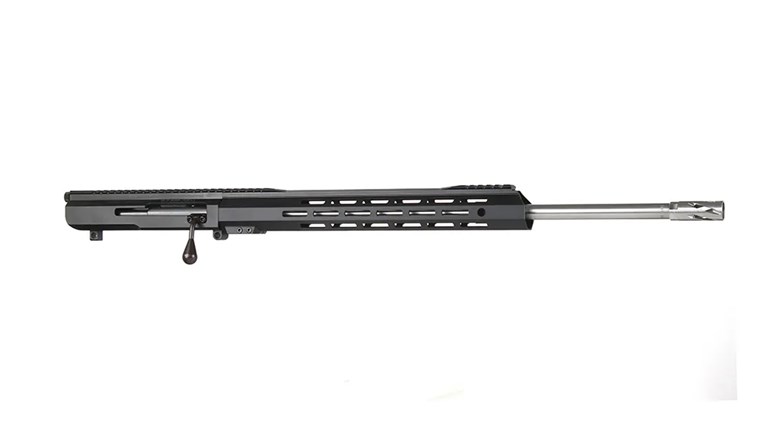
Over the past few years, SIG Sauer has been busy turning out more than just pistols that come through "when it counts." Check the SIG556 and SIG516. With the success of these two rifles spurring further long-gun development, the company has decided to aim big—literally. Enter the SIG50, a bolt-action repeater chambered in .50 BMG that feeds from a five-round detachable box magazine.
"It came out of an international sales request," says David Grimshaw, SIG Sauer Special Weapons Systems Product Manager. "We did not have an anti-materiel-type rifle in our International Sales product line."
Considering the storied role .50-caliber rifles have played in the War on Terror, it makes good sense for a firearms company with global contracts to get in on the action. The way SIG Sauer is going about it is smart, too. There are already a handful of proven .50-caliber platforms, so why reinvent the wheel?
"Bud Fini, Vice President of Marketing, has known Kelly McMillan for some time. Bud and I made a trip to the McMillan facility and discussed the project," Grimshaw explains. "Kelly sent me a TAC-50 to modify, and then modeled the receiver and stock for us from our input. McMillan builds the entire rifle for us."
As you would expect, numerous similarities exist between the new SIG50 and the McMillan TAC-50. They have the same robust action and 29-inch, match-grade, stainless steel barrel, which is fluted for strength and weight reduction. Both utilize a fiberglass stock for which McMillan is famous. The buttstock on both rifles is detachable for transportation and has removable spacers for length-of-pull adjustment, as well as an adjustable cheek piece. Both are covered in a light tan DuraCoat finish.
But that's not to say the SIG50 is a carbon copy of the TAC-50. Notably, the SIG50 receiver departs from that of its TAC-50 cousin, a change that Grimshaw requested to reduce weight. The SIG50 weighs 23.5 pounds without its magazine, about 2.5 pounds less than the empty weight of a TAC-50, and its receiver design plays a part in that reduction. Grimshaw drew on the SSG 3000, which SIG Sauer has imported from J.P. Sauer & Sohn since 2000, for inspiration. The left sidewall of the SIG50 receiver has an angled flat running nearly its entire length—a telltale characteristic of the SSG 3000 that shaves weight. In addition, the receiver design allows for single-round loading of the magazine while it's in the rifle.
Grimshaw also did some work on the TAC-50 stock to make it more ergonomic. The steps he took may come as a surprise.
"The TAC-50 grip was just not the feel I wanted for the SIG50. I started carving on the grip but just could not get it to the feel I wanted," he remembers. "Sitting on the bench in my shop was a P250 with the full-size grip module. I cut the grip off of it and fixed it to the stock. It was exactly what I wanted in grip feel."
Grimshaw made some cosmetic changes to the stock as well. The SIG50 stock has areas of inletting near the receiver and magazine well. It resembles those found on the Blaser Tactical 2, another precision rifle imported to the United States under the SIG Sauer umbrella.
"We wanted the rifle to have that SIG appearance," he notes.
Obviously, the company wanted the rifle to have that SIG (and McMillan) accuracy, too. Does it measure up?
"With quality ammunition, we see sub-MOA groups," says Grimshaw, noting plans to test it at 2,000 yards in the near future. At that range, the SIG50 could theoretically turn in groups of 18 inches—about the width of most silhouette targets. SIG Sauer appears to be hastening the transition of the .50-caliber rifle and its capabilities from anti-materiel to anti-personnel, extending the reach of law enforcement and military snipers.
The SIG50 ships with an M1913 rail and an adjustable steel bipod. An additional night-vision rail is available as an option. The heavy-hitting rifle carries an equally heavy-hitting price tag of $9,325, but it should prove to be money well spent for shooters, agencies and units who need to reach way, way out with authority.


































